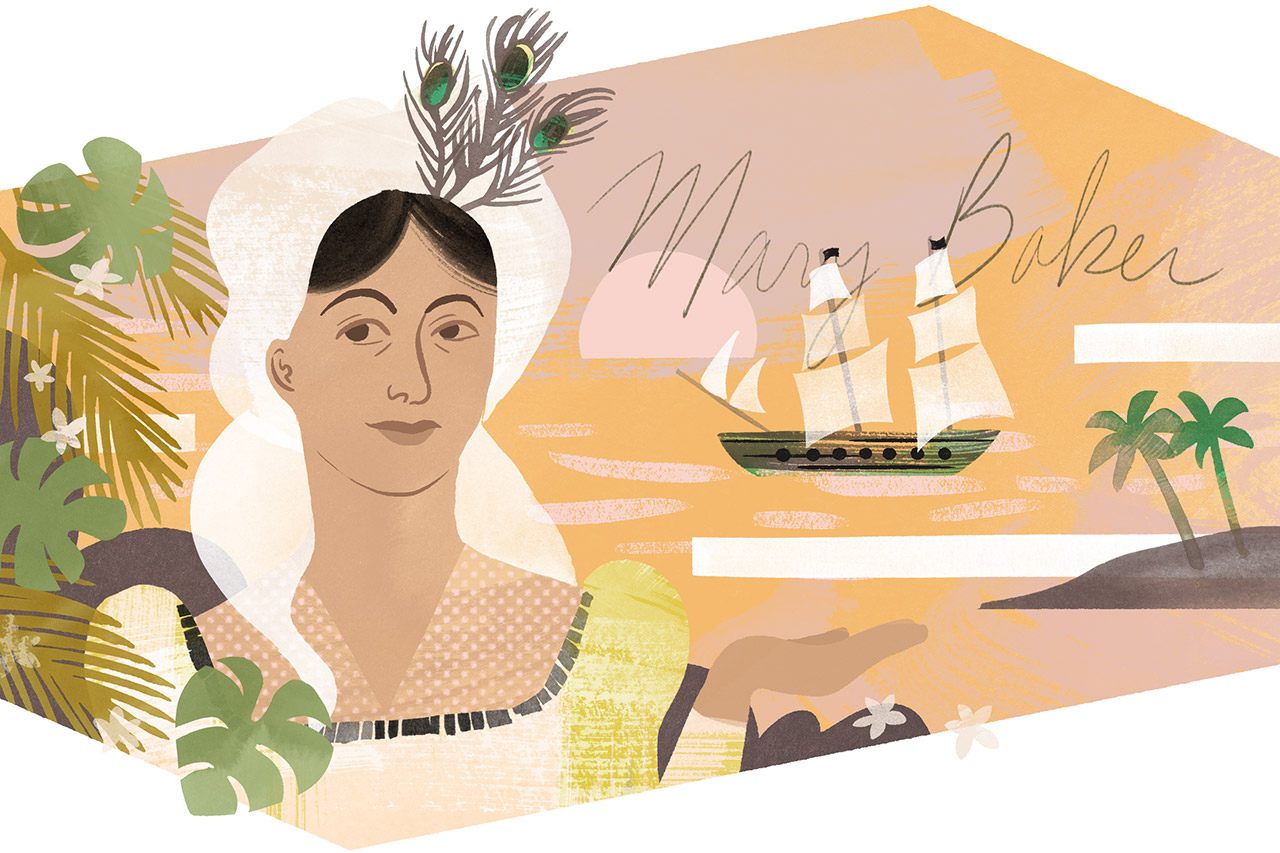The English Servant Girl Who Pretended to Be an Exotic Island Princess
Mary Baker, better known as Princess Caraboo, convinced an entire town she was eccentric royalty.

Everyone loves the story of a good grift, from brilliant ruse to inevitable downfall. This week, we’re ushering in the spring of the swindle by highlighting the stories of the greatest con women in history. Previously, we heard about Barbara Erni and her very special trunk, Madame Rachel’s dangerous cosmetics, and Thérèse Humbert’s imaginary millionaire.
In April 1817, in the small English town of Almondsbury, a humble cobbler was going about his day—no doubt attending to some urgent shoe business—when he spotted an eccentrically garbed woman alone on the road. She wore a black turban and a red-and-black shawl and spoke in an incomprehensible foreign tongue, according to John Mathew Gutch’s 1817 account Caraboo. Kind-hearted locals put her up in a local inn for the night, where she saw a painting of a pineapple on the wall, exclaimed “Ananas!” and promptly tried to go to sleep on the floor.
In a bit of expository deus ex machina, a Portuguese sailor who spoke the woman’s “language” just so happened to pass through Bristol at the time, and soon came to town, according to the History Channel. His name was Manuel Eynesso, and no, of course he didn’t mind translating the lady’s story for the curious townsfolk. According to Eynesso, this wanderer was no random woman but actually the Princess Caraboo from the island of Javasu in the Indian Ocean. She had, rather regrettably, been abducted by pirates but managed to escape by jumping off the ship and into the Bristol Channel, which is how she washed up in Almondsbury. The flattered townspeople began treated her like a visiting dignitary.
In turn, she put on quite a show. She used a bow and arrow, carried a gong on her back, and wore flowers and feathers in her hair. She gave fencing demonstrations, using a blade stained at the tip with vegetable poison. She even, quite scandalously, swam naked in a lake. Each night before she went to sleep, she would pray to her god, whom she called Allah-Tallah, often from the top of a tree. She entertained audiences of foreigners, linguists, painters, physiognomists, craniologists, and vagabonds.
Perhaps it’s surprising it lasted as long as it did, but the ruse fell apart in a matter of months. In June, Princess Caraboo made the local papers and attracted the notice of one Mrs. Neale, who owned a lodging house in Bristol. Neale recognized the princess as none other than Mary Baker, a lodger who would often dance around in a black turban and speak an invented language. Baker did not hail from Javasu—there is no Javasu—but rather a town called Witheridge, and had been working as a servant. The papers seized upon Baker’s story after her exposure, and even ran poetry and ballads composed in her honor. The final verse of one such ode published in the Bristol Mercury in 1817 reads: “I admir’d thy Caraboo./Such self-possession at command,/The bye-play great—th’ illusion grand:/In truth—’twas everything but True.”
By the end of that month, the town of Almondsbury shipped Baker across the Atlantic, to Philadelphia, where Americans were all too happy to see her perform the part of the fake foreign princess. Baker returned to England in 1824 to continue her acting career, to dismal results. But she settled down, married, had a kid, and spent most of her life selling leeches to the local hospital—similarly parasitic souls with considerably less pizzazz.







Follow us on Twitter to get the latest on the world's hidden wonders.
Like us on Facebook to get the latest on the world's hidden wonders.
Follow us on Twitter Like us on Facebook